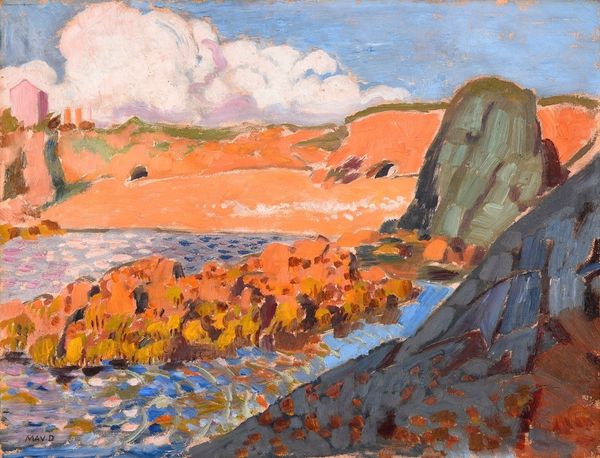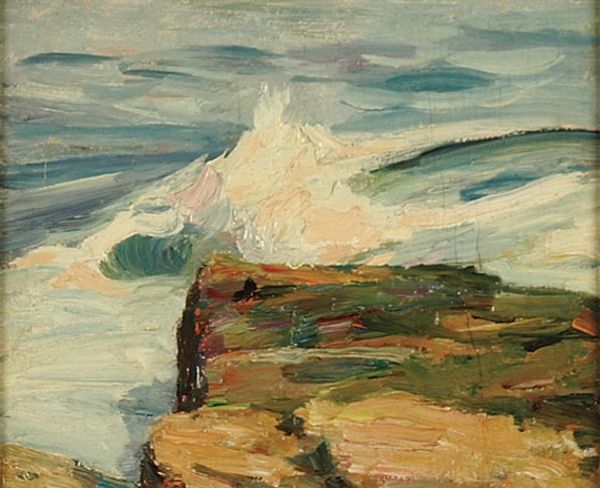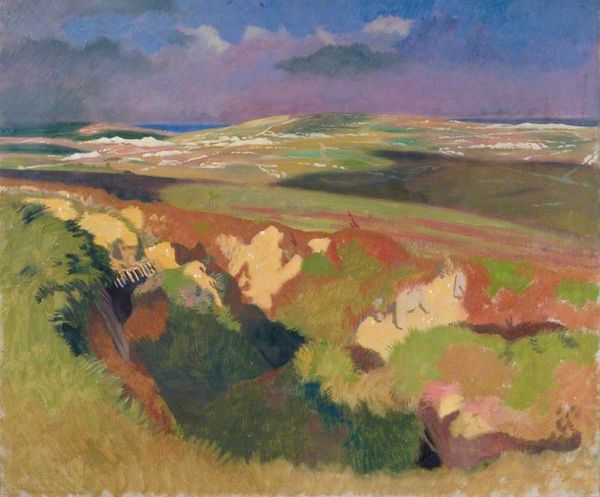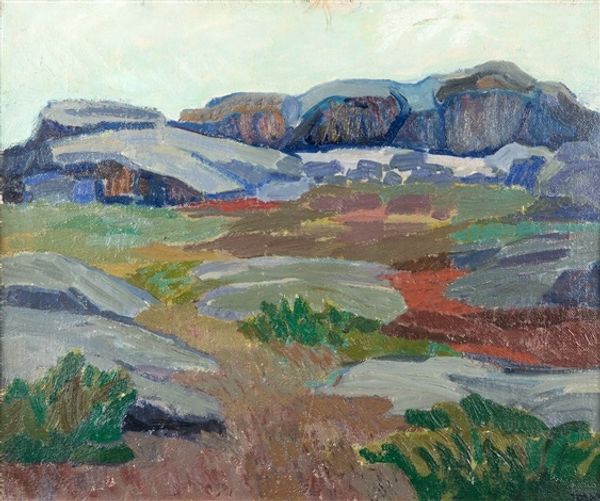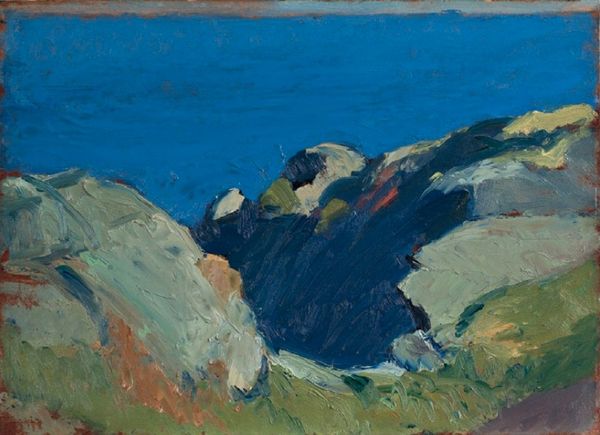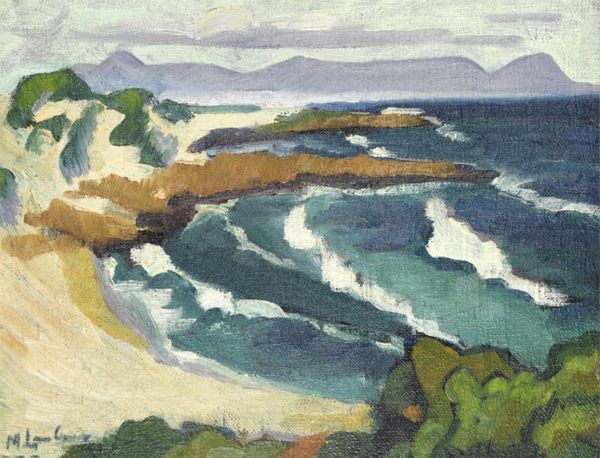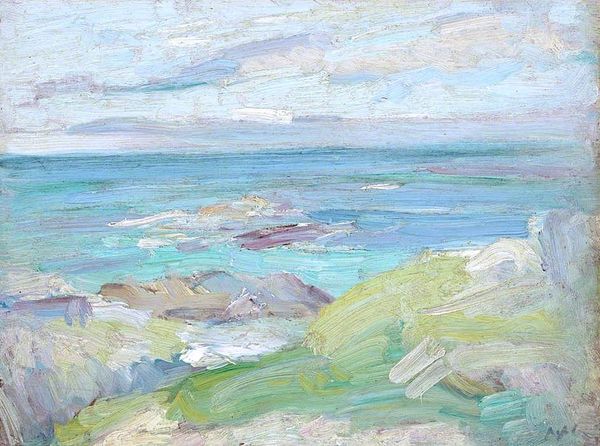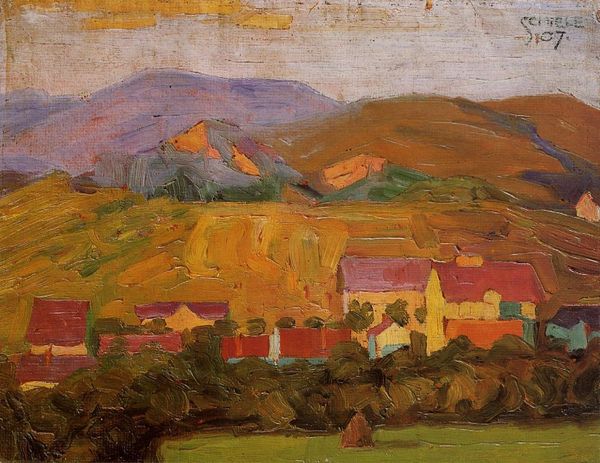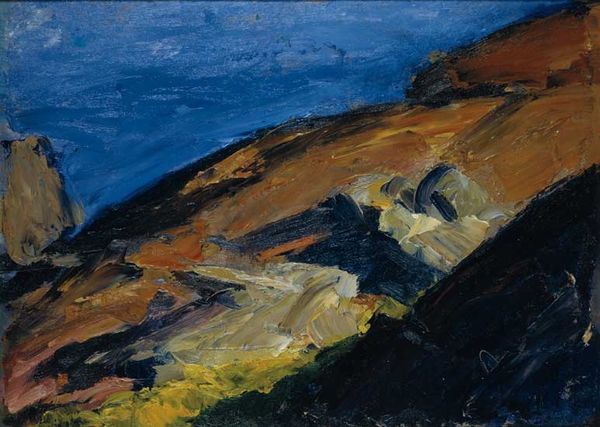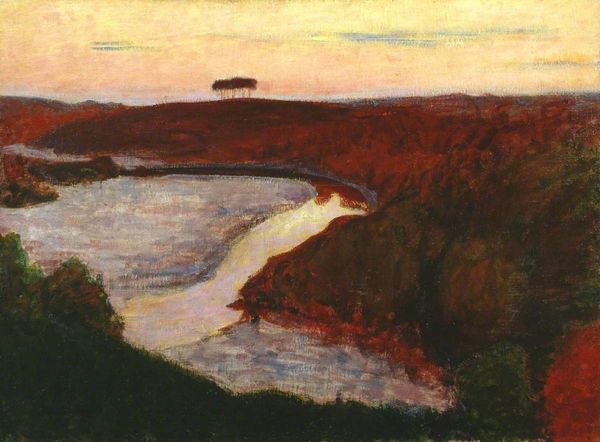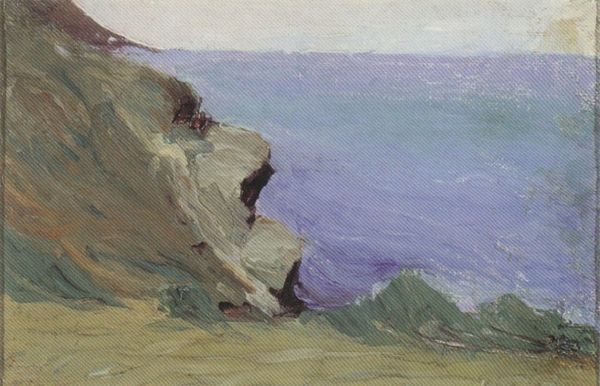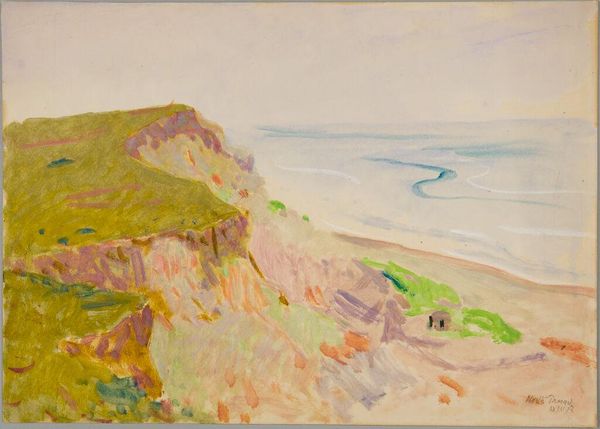
Dimensions: 337 x 45 cm
Copyright: Public domain
Editor: This is Emily Carr's "Chemainus Bay, Vancouver Island," painted in 1925. The brushstrokes are so visible, almost tactile. How do you see the materiality informing our reading of the landscape? Curator: I notice Carr's bold application of oil paint. The thick impasto isn't just descriptive; it's performative. Look at how the layers build up. Do you see how the materiality acts almost as a record of labor? Editor: I hadn’t thought of it that way, but yes. The materiality emphasizes the physical act of painting. So how does that connect to the landscape itself? Curator: Carr wasn't just representing the bay; she was actively constructing it through material means. These materials would have had their own industrial, economic, and social connections to the exploitation of the very land she’s depicting. Is she romanticizing or indicting the extraction implied by this settlement on the resource-rich island? What was the labor that made her practice possible? Editor: That’s fascinating. I was focused on the beauty, but the layers of paint now feel…loaded. Curator: Precisely. The choice to represent the landscape in this particular manner has much to tell us about consumption and labor. How might someone who lived there see her vision? What can the physicality of the painting teach us about land ownership and representation in Canada during the 1920s? Editor: I guess it moves beyond just being a pretty picture into being a document of a specific moment and the way humans interact with the environment, good and bad. Curator: Exactly! And the materials themselves become actors in that story. Thinking materially has opened us to questions we might otherwise miss. Editor: Definitely gives me a lot to consider when looking at landscapes.
Comments
No comments
Be the first to comment and join the conversation on the ultimate creative platform.
